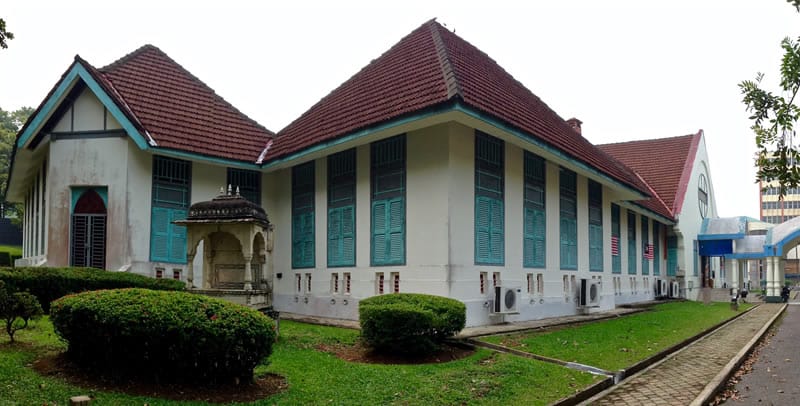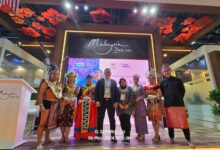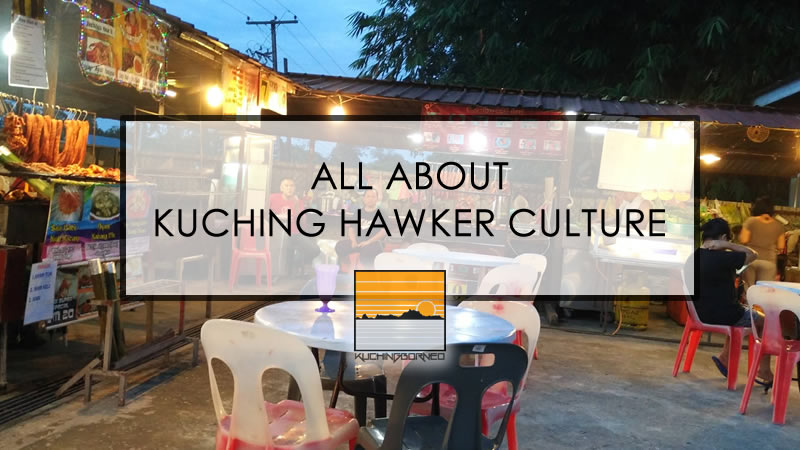Historical places in Kuching / Kuching heritage trail

There are quite a number of historical places in Kuching which one can visit, especially if one is interested to check out these places.
In Kuching, these places are well maintained and currently still serve as an important place.
Here’s a list of these places and it’s history so that you will know the places better.
THE OLD MOSQUE OF KUCHING

Previously the State Mosque of Sarawak and an integral part of the Kuching landscape, the Kuching Mosque; affectionately known as ‘Masjid Lama’ (Old Mosque), the present structure was built in 1968 to replace an original wooden one built in 1852. Best seen from the river, its gilded cupolas make it one of the city’s most striking landmarks, particularly at sunset.
INDIA STREET

India Street is lined with shops selling all kinds of goods, particularly textiles. Mid-way down India Street (if you can find it!) there is a narrow passageway that leads to Gambier Road. If you follow this passageway you’ll pass a small Indian Mosque hidden away in the middle of the city. The Mosque’s structure has undergone many changes since it was originally built by Kuching’s Indian Muslim community in the mid 19th century.
THE SARAWAK MUSEUM

The Sarawak Museum, straddling both sides of Jln Tun Abang Haji Openg, has one of the best collections in Southeast Asia. The old wing, opened in 1891, is designed in the style of a Normandy town-house. It houses an exceptional ethnographic collection, some good natural history displays and a section on the oil industry in Sarawak. The exhibition of traditional wood-carvings on the first floor is magnificent. The new wing across the footbridge is used for events and exhibitions In the Museum grounds there is an Aquarium, the Botanical Gardens and the Heroes’ Memorial.
THE ISLAMIC HERITAGE MUSEUM

The Islamic Museum presents a clear picture of the rich historical heritage and special culture of the Muslim community in Sarawak and throughout the Malay-Indonesian archipelago. The displays trace the connections of the development of Islam here with the rest of the world. The museum consists of seven galleries set around a central courtyard garden, each with a different theme. The Islamic Museum building was first built for a school. It was then known as the James Brooke Malay college. Later it became known as the Maderasah Melayu Sarawak (1930). In 1992, the Islamic Museum came into being.
THE CHINESE HISTORY MUSEUM

The Chinese History Museum (Kuching Chinese Museum) is one attraction that you should not miss when you travel Kuching in Sarawak. The museum was formerly the headquarters of the Chinese Chamber of Commerce in Sarawak, but was opened to the public in 1993 as a place where tourists can learn more of the Chinese people that resided in Sarawak from decades past. The Chinese museum is in itself full of history, seeing that it was a venue for discussions and trials involving the Chinese in Sarawak. At present, the building houses many artifacts of past eras and contains many memorabilia of Chinese affairs during the time of Charles Vyner Brooke who is popularly known as the White Rajah in Sarawak history.
FORT MARGHERITA

Fort Margherita was built in 1879 to guard Kuching’s river approaches from pirates. In the old days, a canon shot was fired from here every evening to mark the end of the government work day. Named after Charles Brooke’s wife, Ranee Margaret, it is a unmistakable landmark along Sarawak River. As the Fort is situated within the police training barracks, visitors may be asked for some form of ID.
THE SARAWAK TOURISM COMPLEX

Formerly known as the Court House Complex, it was built in 1871 as the seat of Sarawak’s government, and was used for this purpose as late as 1973. It is a superb collection of buildings, with magnificent belian (ironwood) roofs and beautiful detailing inside and out, reflecting local art forms. The colonial-baroque Clock Tower was added in 1883 and the Charles Brooke Memorial in 1924. The complex also includes The Pavilion Building – a piece of old New Orleans transplanted to Kuching, completed in 1909 used for many years as the General Hospital and now transformed into Sarawak’s Textile Museum – and The Round Tower, originally planned as a fort (1886), then used as a dispensary, and nowadays the headquarters of the Sarawak Craft Council. Following restoration of the original buildings and redevelopment, this important heritage site (situated at the junction of Main Bazaar and Jalan Tun Abang Haji Openg, facing the Waterfront) reopened in 2003.
THE TEXTILE MUSEUM

The textile museum showcases authentic textiles made by the main ethnic communities of Sarawak. Visitors follow an exhibition flow of how a finished product such as weaving came about. Also on display are contemporary work of designs based on traditional weaving and design techniques. Traditional costumes and fashion accessories used in ceremonies are also on display. The architecture is an attraction in itself. It is a combination of English renaissance and colonial theme. Rectangular in structure, the Pavilion Building as it is known, was first constructed in 1907 a medical center. The 3-storey building later became the headquarter of the State Education department. The museum opened n August 2005.
THE SQUARE TOWER

Don’t miss the Square Tower at the edge of the Waterfront as you stroll along the south bank of Sarawak River. From the top of the tower you can view the same spectacular vistas of Mounts Santubong and Serapi that enchanted such illustrious visitors as Somerset Maugham. It was originally meant as a prison when it was built in 1879. It later became a fortress but it never fired a shot in any conflict, unlike its wooden predecessor which was burnt down in the 1857 Gold Miners’ Rebellion.
THE MAIN POST OFFICE

The Main Post Office on Jalan Tun Haji Openg was built in 1931, and it appears to belong to the early 19th century with its neo-classical style and Corinthian columns. This majestic building was designed by Denis Santry of Messr. Swan & McClaren Architects (Singapore). Completed in 1932 under Charles Vyner (the third Rajah), the Neo-Classical facades were quite in contrast to the style of buildings favoured by James and Charles Brooke (the first and second Rajah). The site was once used for a police station and also the Rajah’s Stables. Occupants of the old Medical Headquarters across the road fondly recall looking to the Rajah’s Stables, surrounded by areca palms, to the coach house, hay loft and harness room, and watching the horses being fed, watered & groomed.
TUA PEK KONG

If you ever wanted to visit an old Chinese temple, this is it. Sitting on a foothill and commanding the view over the river and Main Bazaar, the ornately decorated Tua Pek Kong Temple, which was one of the few buildings that survived the 1884 Great Fire of Kuching, is said to have the best Feng Shui location in the city. It is believed to date back to 1843 and has been on official records since 1876. Various traditional festivals are held here every year, including the famous Wang Kang Festival to commemorate the dead.
THE ASTANA

An imposing palace on the north bank across the river from the Waterfront, the Astana was built in 1870 by Charles Brooke (the second “White Rajah” of Sarawak) as a bridal gift to his wife, Margaret. Today, it is the official residence of the Governor of Sarawak, and therefore not open to visitors.
CARPENTER STREET/JALAN MAIN BAZAAR

Adjacent the Waterfront, the Main Bazaar is the oldest street in the city and the heart of old Kuching. It has some superb examples of Chinese shophouse architecture, many of which have been occupied by the same family for generations. The street currently houses Kuching’s highest concentration of antique and handicraft shops. Jalan Carpenter, which is parallel to Main Bazaar, has a similar selection of small traders and coffee shops, as well as food stalls and two small Chinese temples. For aficionados of heritage buildings, there is a row of perfectly preserved 19th century Chinese houses at the nearby Upper China Street (off Leboh China).
NATIONAL HISTORY MUSEUM

This building was built in 1908. Once used as administrative offices, it now displays a natural history collection. Among the items on the display are special collections found in Borneo such as skeletons of mammal, invertebrates, reptiles, birds, inserts, fishes and shells which have all been conserved.
SARAWAK STEAMSHIP BUILDING

Previously the offices and warehouse of the Sarawak Steamship Company, the Sarawak Steamship Building on Kuching Waterfront was built in 1930. It now the home of the Kuching Waterfront Bazaar, with dozens of stalls selling a wide range of handicrafts and souvenirs.






